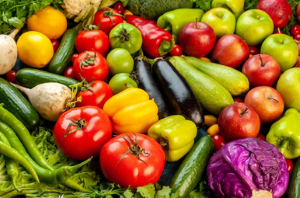Eat an Apple and Some Broccoli and Call Me in the Morning: Produce Prescriptions Offer Health Benefits
By Reed Mangels, PhD, RD
Did you ever imagine that your health care provider would give you a prescription that provides free or discounted produce? Such prescriptions, called produce prescriptions, have been given to people who have or are at risk for diet-related diseases such as heart disease, high blood pressure, and diabetes. Often recipients have low incomes. Financial costs of programs providing produce prescriptions may be covered by grants, donations, some Medicare Advantage plans, Medicaid pilot programs, and private insurance companies. Often these are pilot programs and are limited in both duration and in the number of people that can be served.
A recent study examined the effects of produce prescription programs in 12 U.S. states (1). Almost 4,000 individuals received produce prescriptions. About half were adults and half were children. They were all from low-income neighborhoods. Participants received paper vouchers or electronic cards providing from $15 to $300 per month to buy fruits and vegetables at grocery stores and farmers markets. They attended nutrition classes. The median length of program participation was 6 months.
Adults receiving produce prescription ate, on average, more than three quarters of a cup per day more fruits and vegetables; children averaged a quarter cup more per day. Both adults and children reported that their overall health status improved. Among adults with poor health, improvements were seen in blood pressure, glycated hemoglobin (a measure of diabetes control), and body mass index (BMI). These results suggest that produce prescriptions could have important benefits.
At this point, programs that provide prescriptions for produce are small and are unavailable to many Americans who could benefit from them. These programs appear promising and should be considered in any discussion of health care policy.
References
- Hager K, Du M, Li Z, et al. Impact of produce prescriptions on diet, food security, and cardiometabolic health outcomes: A multisite evaluation of 9 produce prescription programs in the United States. Circ Cardiovasc Qual Outcomes. 2023;16(9):e009520.
To read more about improving health with nutrition see Ana Negrón, MD. Healing from the Kitchen

